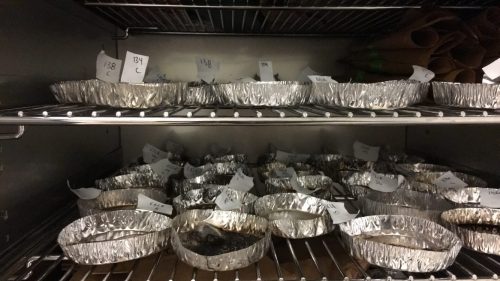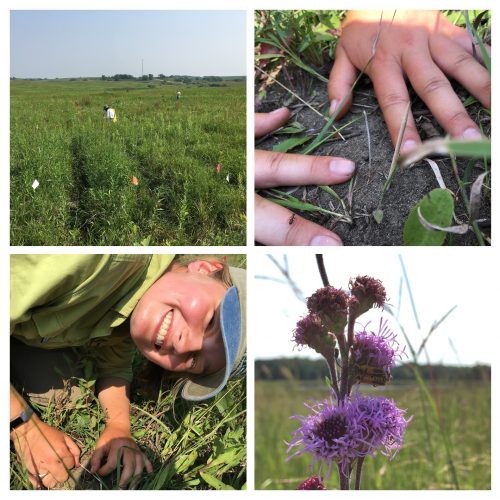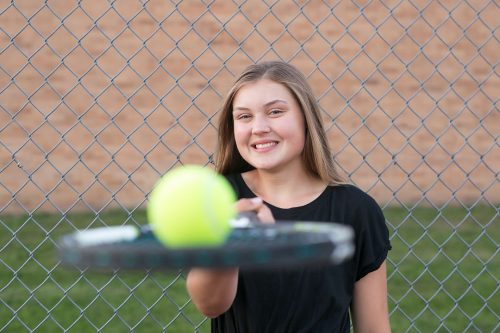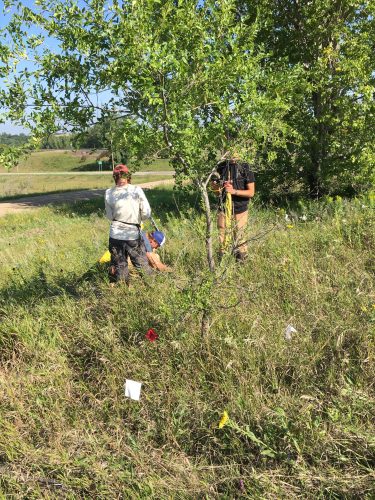|
|
Hello once again flog!
Last weekend I presented a poster (link below) at the Massachusetts Association of Conservation Commissions convention in Worcester, MA.
This was my first poster symposium and I am glad to say it went great! I was able to interact with so many people attending the conference, along with other student researchers. I received some wonderful comments and feedback, and hopefully was able to make more people aware of soil, native bees, and the Echinacea Project!
My poster focused on the soil texture data I collected over January and its correlation to native bee nesting. After a little more work in R, I found some surprising results. The percent of sand or silt did not have any influence on bee presence. However, between the eight sites and the three land uses, variation in percent sand was significant. Meaning, soil variation does exist across the Echinacea Project sampling area, it just might not be the strongest factor influencing bee nesting.
The soil is only one component of this project though. We also collected data on the slope, vegetation, percent bare ground, and soil hardness. One of these variables may be the key in understanding native bee nesting, so there’s a lot more analyzing and R to come.
I am so grateful for all the help I have received to make my first poster experience a success!
Until next time!
 Click on the link below to see a high resolution image of the poster annavoldMACCposter19Final
After processing soil samples for two weeks (341 to be exact!) I was able to analyze some of the results and, along with the trusty functions of R (and of course T-Swift music) graph my data. I have included my poster down below and a pdf link.
The results provide evidence that shows soil in western Minnesota contains large percentages of sand and silt, with little clay. Between each of the 8 locations, some variation was present in the amount of sand, but not with clay. The results also showed that sand and silt may have no influence on the nesting locations of native bees. When compared, the graphs of sand and silt percentages from where a bee was found and not found were quite similar. So the question remains- What are the factors that influence where bees build their nests?
Throughout my entire time working on Team Echinacea and this soil project, I have gained valuable knowledge and experience about data collection, project development, and different research methods. And not to mention the amazing lab group and individuals I have gotten to work/collaborate with! Since my college career is just beginning, the future has a lot in store for me- I can’t wait to see what happens in the next couple of years.
But one thing is for sure, I can officially cross “eat deep dish pizza in Chicago” off my bucket list!

AnnaVoldposter19.pdf
Hello flog!
Unfortunately for all you T-Swift fans out there, I will not actually be devoting much of this blog to her… Instead, I am going to talk about the fascinating world of R, a statistical analysis coding program that allows you to organize and graph your data.
Since my time at the garden is coming to an end this week, I have begun to learn how to analyze my data within R. R can be a little complicated because often times even a Blank Space can mess up an entire line of code. However, with lots of help (like lots, from R genius Michael) I was able to organize and even plot some of my results! An important lesson- if your code doesn’t work the first time, Shake It Off and try again!
For my project, I am aiming to create two different graphs, a series of histograms and soil texture triangles. A histogram will show the amount of sand, silt, and clay within each of the 8 sites. Then to understand the texture differences, a soil triangle will plot the percentages of sand, silt, and clay in what type of soil they correlate to. For example, 45% sand, 40% silt, and 10% clay might fall at the bottom of the triangle in the sandy loam portion. Who knows maybe I’ll have Fifteen graphs by Friday!
 A preview of my graphs! Even though R can be a pretty Delicate program, it is extremely helpful! But being able to efficiently code has always been one of my Wildest Dreams. So, for now, there’s no Bad Blood between R and myself.
T-Swift out, till next time!
Hi Flog!
So, remember the micro- pipette method I mentioned a couple days ago? Well, as the name implies, everything is micro- the sample size, the vials, the pans, and the numbers. The process begins by weighing out 2 grams of each soil sample. Each sample is put in individual “tornado tubes” AKA vials filled with 20 ml of both water and sodium hexametaphosphate (try saying that ten times!). Vials are then shaken for approximately 30 minutes to create a uniform solution. Then, drum roll please…., comes the macro part of the process, the settling time. A 1 hour and 45 minute settling time… But this wait means I have time to write to all of you!
After the wait, comes the final part of the micro-pipette process that involves separating the clay and sand components of each sample into two different miniature pie pans. That means that 10 samples = 20 pans, 20 samples =40 pans, and 25 samples = 50 pans, etc etc etc… Guess how many samples I did today??!! 50! That’s 100 mini soil pies! Sometimes I feel like a professional baker making this many pies!


Anyway, as my first week at the garden comes to an end, I’ve developed more efficient methods and routines to help me be as productive as possible .I might even get close to finishing all 300 samples by the end of next week. I’ve also been introduced to an amazing community of scientists and can’t wait to learn more about their research!
Till next week!
Hey hey hey! My name is Anna and I was a summer intern on the Echinacea Project in high school. Now, as a college freshman, I am currently exploring another side of the project at the Chicago Botanic Garden lab! For my two weeks in Chicago, I will be working on the soil component of Kristen Manion’s project. Her study considers numerous elements of native bees’ habitat in hopes to determine their nesting preferences.
Over the summer, soil samples from 8 sites were collected and each site had three different land uses: old field, native prairie, or restoration. In total there are 328 samples to be analyzed through the micropipette soil texture method! The micropipette method involves separating the soil into its clay and sand components and then calculating the percentage of sand, silt, and clay for each 2-gram sample. By the end, I am aiming to create two soil triangles and answer these questions :
- Does the soil type differ between bee presence/absence?
- Does the soil type differ between land use types (remnant and prairies and old fields)?
My other goal is to simply gain experience in a lab by being exposed to a variety of techniques through Kristen’s and the Echinacea Project’s methods. However, I also have a couple of personal goals… like eating deep dish pizza, taking my picture in front of the bean, figuring out public transportation, and did I mention deep dish pizza?!
My adventure here in Chicago is just beginning and I can’t wait!
Today was another warm day on the prairie, but the temperature was not the only thing the team noticed. Due to wildfires in Canada, dust has drifted into Minnesota making the sky appear hazy. This afternoon an air quality alert was also dropped announcing that there could be dangerous conditions until Sunday. Luckily, the Hoffmann/Kensington area was alright and all members of Team Echinacea are still living and breathing!
So what made this a quality Friday were all the tasks accomplished. This morning rechecks in P2 and other phenology checks were completed. Rechecking plants can be a little mentally taxing since you are looking for something that was previously determined to be gone. However, everytime someone finds a plant, they get to do a little celebration shout. So far popular ones have been, “YASS!”, “YEET!”, or “Huzzah!” Mia even found a plant during rechecks that was only 4 cm tall! ( She did a little celebratory dance on the side of her “YASS!”).
Demo at multiple sites was also finished throughout the morning and afternoon. Harvesting and rechecking head records took place later in the afternoon. And not to forget all the individual project work that went on in between!
 P2 and Mia’s plant! Finally, watermelon rounded out this quality field day before the weekend!
Luckily the fear of Friday the 13th did not hinder Team Echinacea’s efficiency in the field. We actually accomplished quite a list of tasks and made for a productive day.
- Today was a designated phenology day, so the team split off and headed to P1, P2, SPP, or remnants to collect data
- John and I finished soil samples at East Elk Lake! We recorded data about the slope, aspect, and bare ground percentage, along with a sample, at almost 160 points.
- Lunch did not include quite as many debates about what and what is not a sandwich, but we did watch the almost 5 1/2 hour match between Isner and Anderson at Wimbledon!
- The afternoon included measuring P9 (another hybrid plot at Hegg Lake), work in P2, moving emersion tents, and aphids.
- And now it’s the weekend, so Friday the 13th was not too unlucky after all!
Till next time and happy Friday!
 The team after phenology in P1
Echinacea Project 2018
Environmental Science, Wellesley College 2022
Research Interests
Growing up on a dairy farm, I am passionate about creating a sustainable planet and, of course, my cows! I would like to learn more about Minnesota prairie and plants like Echinacea angustifolia to better understand how to create more sustainable agricultural practices and make agriculture beneficial to all consumers and the environment.
So, this summer I am open to studying anything from pollinators to phenology to help me understand more about conserving the resources and land we have now.
Statement
I am from Glenwood, MN about half an hour south-east of the project base. As I mentioned above, my family owns and operates Dorrich Dairy. Even though I do not plan on majoring in agriculture at this point, I hope to maybe work with it in some aspect in the future. In my free time, I enjoy gardening, baking, traveling, eating pie, and playing tennis.

Yesterday was my last day with the Echinacea Project and on Tuesday, I presented what I worked on this summer. Using R Studio, Google Earth, and Soil Web, I learned a lot about programming and soil in general. After plotting the plant points on Google Earth, I found 9 different soil codes in 8 sites. The most common type was BaC2 with 51% of the plants followed by LeF with 20%. These two soils were both classified as well-drained and have slopes or hills. However, the horizon of the main series of soil they are each made up of is quite different. I included my powerpoint with some of the information I found. Soil is a very large topic, so I am hoping to continue learning!
I had a blast this summer learning and working with everyone! Thanks again!!
soil types in Echinacea
P.S. Plexipus and Angustus both transformed into beautiful butterflies!:)
So, today is the first day of my last week and also my last flog!:( This summer has been super fun and educational! I’ve had the opportunity to meet so many awesome people and learn a lot about the area I live in!
However, today was also the official last day of phenology! The last plant was at Steven’s approach and Lea had the honor of double checking its status as done flowering. This morning we worked on demo and seedling searches at Loeffler’s corner. In this particular area, someone decided to dump a bunch of woodchips and not just in one spot, no no spread out. This made it slightly depressing since there were a number of points totally covered by wood. Despite this challenge, plenty of flowering plants were still found! After lunch, the team also worked on demo.
 Tracie, Alex, and Wes working on demo It’s crazy how fast this summer went and I already start school in a week! I’m looking forward to my senior year and finalizing my college decision. Wish me luck!
Thanks again to everyone on the Echinacea Project Team!
|
|









